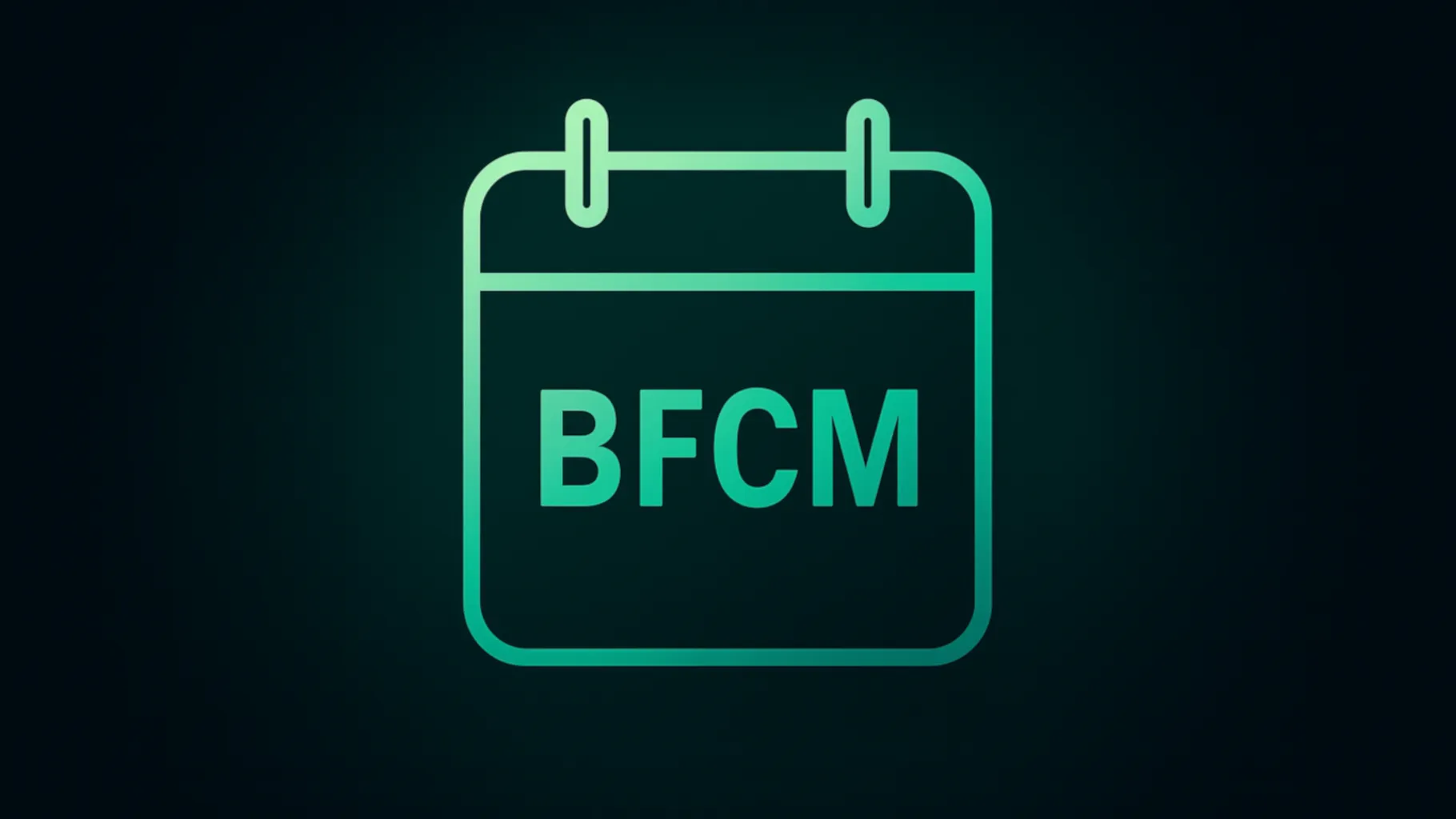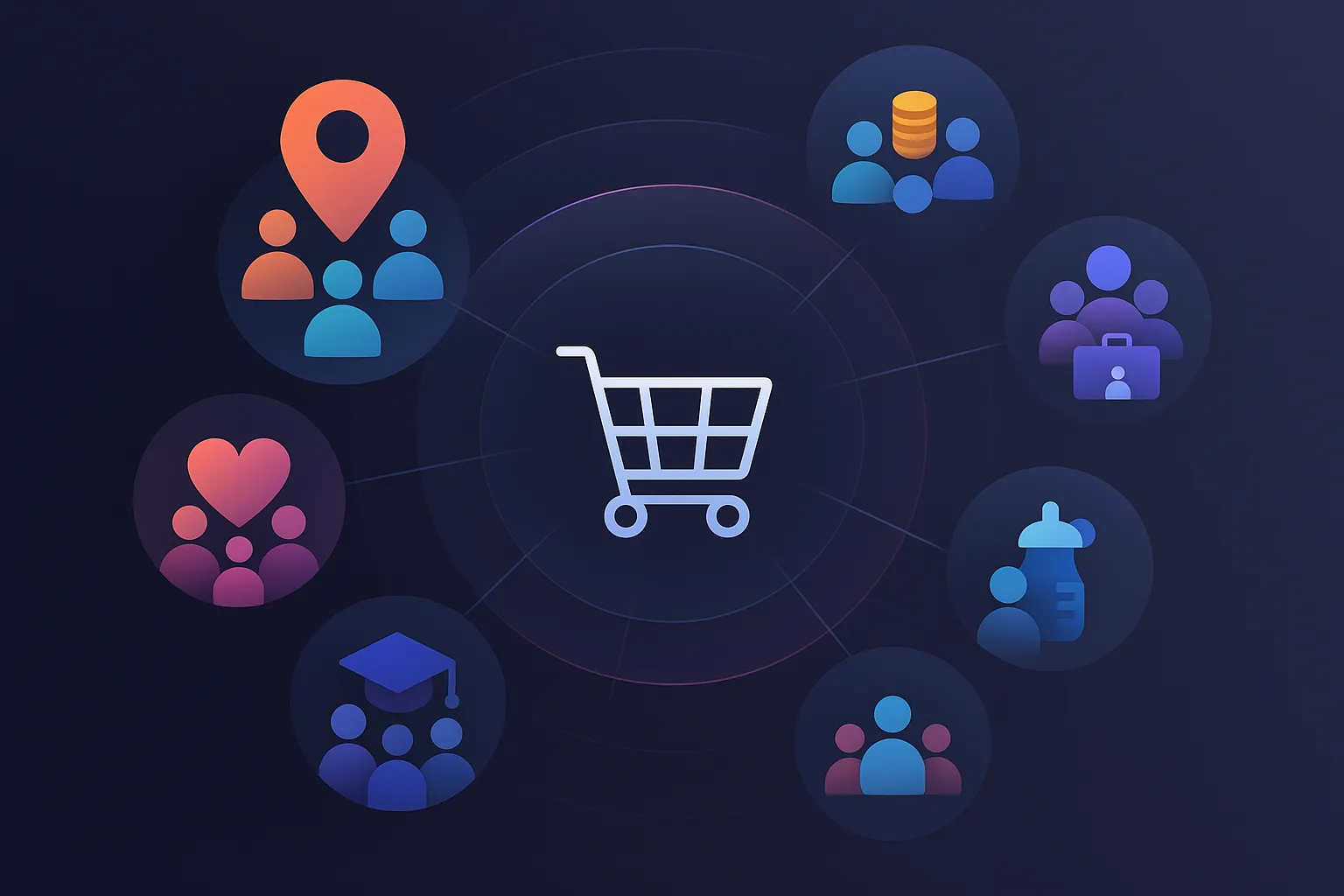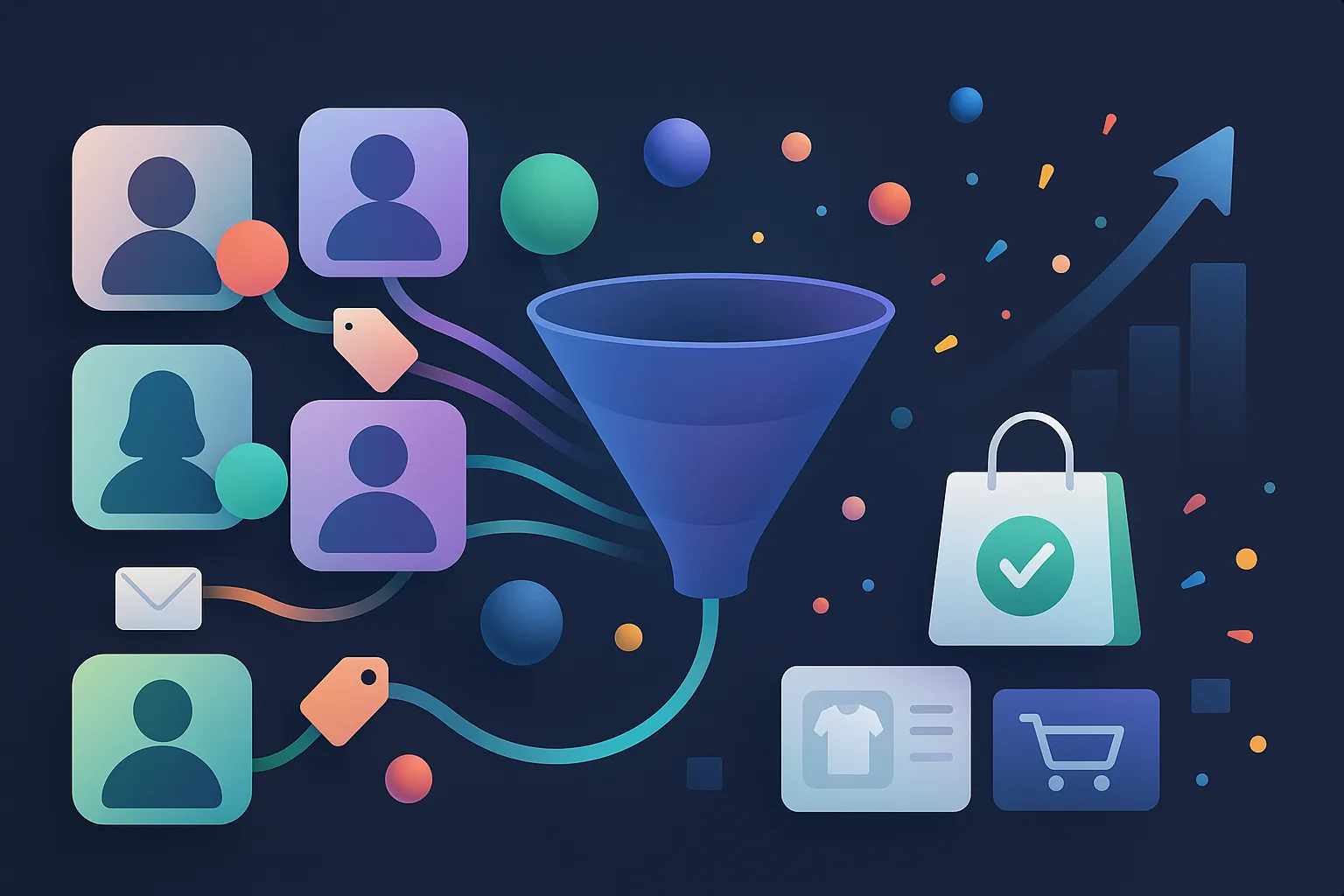When one of our clients hit the coveted 50% open rate on their real estate newsletter, we knew we were onto something.
Pressed for time? Use our free email templates.
Not sure what to say? Try our goal matrix.
Worried about low engagement? Follow our strategy checklist.
We also spoke to Shopify email marketing experts behind successful retail newsletters for fast-growing e-commerce brands to get you tried-and-tested advice.
Whether you are launching your first Shopify email newsletter or struggling with dismal open rates, this guide is for you.
How to Create a Shopify Email Newsletter Strategy For Your Brand
Why should you bother building an email newsletter? The purpose is to create a deeper relationship with those who have signed up for your newsletter, as they are probably looking for more than just discount codes.
That is why newsletter campaigns are the second most popular type in e-commerce.
Here’s the zero-fluff system you need to build a newsletter strategy for your Shopify store:
Step 1: Set Clear Goals
Every newsletter should tie to a goal. Not “Send it on Thursdays,” but something your subscribers want and your business needs.
Andrew Dyuzhov, the Marketing Director at Selzy, explains:
“Each send should solve a clear task: maybe it’s launching a new product line, announcing a policy change, or sharing regular content that builds your authority and trust with readers. At the same time, the subscriber should always feel they’re getting something useful.”
Use this goal matrix to align business priorities with newsletter goals. If it doesn’t hit at least one of these, skip sending the newsletter.
Pro tip: Don't limit yourself to the goal of offering perks in your newsletters. As Morne de Heer, a web development and digital strategy expert at Brand Nexus Studios, explains:
“If every email is just a 20% off! announcement, subscribers quickly get fatigued. They either learn to only open emails when they need a discount (which devalues your products) or, worse, they just start ignoring everything or unsubscribing because there's no other real value being offered.”
So mix it up with some user goals (benefits that subscribers gain from your newsletter) that go beyond offers. User goals include:
- Updates about industry trends
- Information about topical issues
- Perks/offers
- Entertainment/inspiration
- Product discovery
- Insight into brand ethics (something that has become important with customers aligning their political inclinations with their shopping decisions)
- Time-saving tactics
- Product usage tips
- Community engagement
You will notice some user goals map directly to business goals in your retail newsletters. For example, a product round-up supports both product discovery and time-saving. However, remember that trying to make your e-commerce newsletter do everything is a fast track to confusing your reader and losing them.
Step 2: Choose the Right Newsletter Format
Choose a newsletter format by asking:
- What do I want the reader to do?
- What content supports that?
Steal this table for your email newsletter strategy to build a calendar:
Caleb Johnstone, SEO Director of Paperstack, recommends starting with one specific format, like a monthly tip roundup or BTS update. “Templates for recurring formats reduce effort and keep you consistent,” he says.
Start your newsletter for free with our editable and downloadable newsletter templates.
Step 3: Lock in Voice, Visual Style & Vibe
Your e-commerce newsletter should be a natural extension of your brand. From tone and color to where buttons are placed, every visual cue should reflect your identity as part of your larger email marketing strategy. And this consistency should flow into your other platforms (SMS, push notifications, and WhatsApp) for proper omnichannel marketing.
Templates can help with this step, but only if you use them correctly.
As our sales team puts it, “Templatization is not personalization.”
Here’s what we recommend:
Audit your website and other marketing touchpoints for brand lingo, color cues, and design elements. Build a signature layout based on that. This exercise ensures you don’t just drag and drop. Instead, you will maintain a consistent voice throughout, from email sign-up forms or retail newsletter popups to CTA buttons.
Playful brand? Use a conversational tone, pop culture references, emojis, GIFs, and bold visuals to match the energy. Here’s an example from Magic Spoon, a cereal brand:
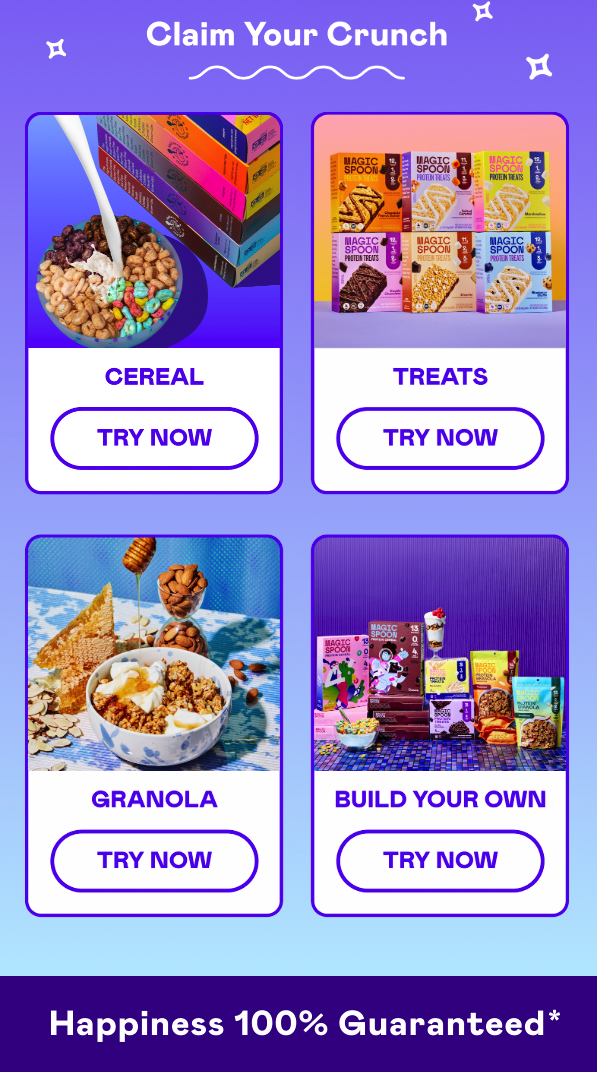
Why it works: This e-commerce newsletter leans into a nostalgic, playful vibe with bold visuals and copy, such as “Claim Your Crunch.”
Is your brand in the luxury niche? Go for editorial-style layouts, refined fonts, and polished headlines that whisper, not shout. Check out this email from Necessaire, a luxury skincare brand:
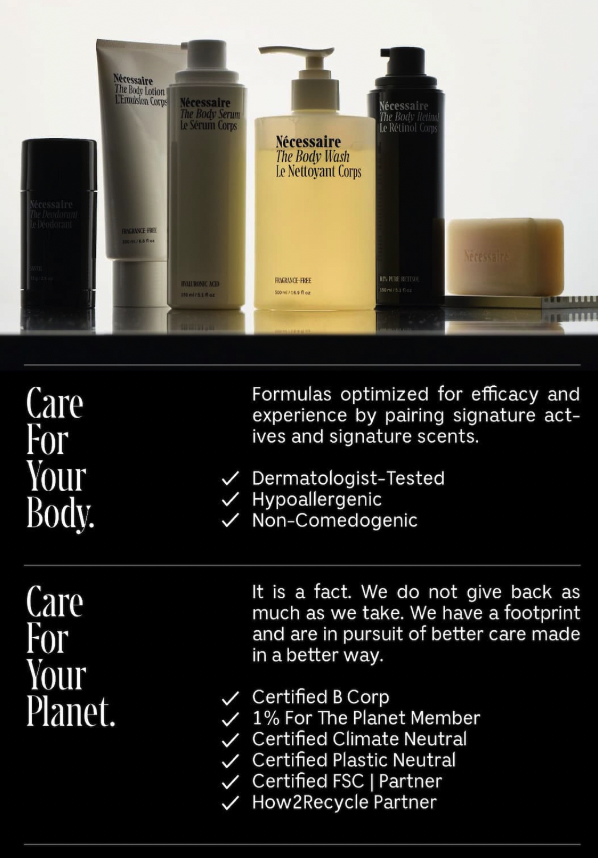
Why it works: The muted image, elegant copy, quiet fonts, and monochrome palette reflect the brand’s luxury aesthetic.
Want to go for a minimalist vibe? Stick to soft tones, plenty of negative space, and clean layouts. Here’s how Brightland, an olive oil and vinegar brand, does it:
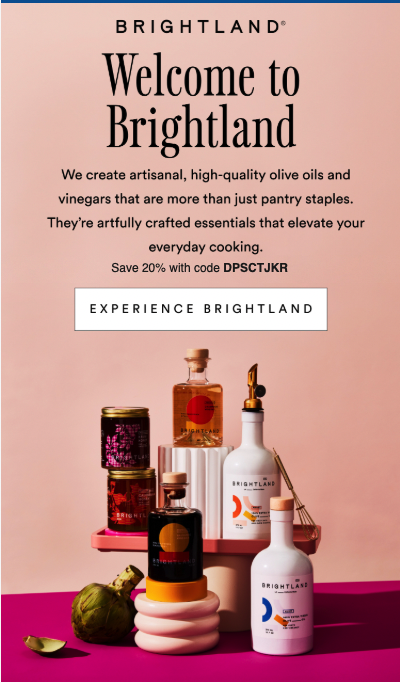
Why it works: The brand utilizes a minimalist layout with pastel backdrops and crisp product photography to highlight its artisanal appeal.
The takeaway? Your tone and visuals should make the email unmistakably yours.
Step 4: Take Advantage of Segmentation
Remember the client we mentioned who hit that 50%+ open rate? That was Florida Trend, a publication that delivers business news across various industries. Dynamic contact segmentation helped them achieve this impressive rate. By sending daily and weekly digests to the right readers, they delivered results advertisers could actually measure.
And they are not the only ones seeing positive results.
Yabby, an Australian bathware brand, segments audiences by renovation stage. “It’s helped us send more targeted, relevant content,” says Layla Sawyer, their Senior Marketing and Ecommerce Coordinator.
Tracking the buyer lifecycle is a tried-and-true way to send relevant emails.
Selzy’s marketing director, Andrew Dyuzhov, puts it simply: “If I signed up for a pet store newsletter and have two cats, I don’t want tips about parrot food. I would rather see advice on picking the best cat carrier.”
He further elaborates, “Incorrectly identifying where the lead/subscriber/potential customer is in the funnel (or not doing it at all) leads to poor communication.”

Avoid these pitfalls by using our pre-defined customer segmentation filters!
Step 5: Decide Cadence
Don't ghost your subscribers, but don’t spam them either. Consistency builds trust.
Weekly newsletters have the highest CTR (5.71%) and open rates (48.31%), but you can also create biweekly or monthly newsletters. The key is to pick a send frequency that your team can sustain and your audience can handle.
Start slow and scale as you go. A predictable rhythm matters more than high volume.
Step 6: Set Up Automations To Save Time
You don’t have to send a newsletter to each customer manually. Marketing automation enables you to personalize at scale, allowing you to send timely, relevant emails without last-minute stress.
Use PushOwl’s automation toolkit to pre-schedule recurring flows without manual setup, even for seasonal promos.
How to Build a Newsletter for your Shopify Brand
With strategy in place, here’s how to create an effective email newsletter:
Step 1: Pick a Topic
Before you start writing, ask: “What is the purpose of this newsletter?” Once you pick a central idea, let every link, CTA, and image reinforce that theme. As Mac King, co-founder of Shopify agency Domaine, puts it: “Packing too many messages into a single email leaves readers unsure of where to focus.”
Step 2: Write Like a Human (With Emotions)
A newsletter isn’t a press release. Or a product manual. Or an ad.
It’s a conversation with someone who chose to hear from you.
To keep them reading, speak their language. Reflect their wants, values, problems, and personality. The more your copy sounds like them, the more likely they are to stay until the end. ChatGPT prompts can help you polish your newsletter, but let the first draft be unabashedly all that your brand wants to stand for.
Look what Pawsafe, a petcare brand, sent to us:
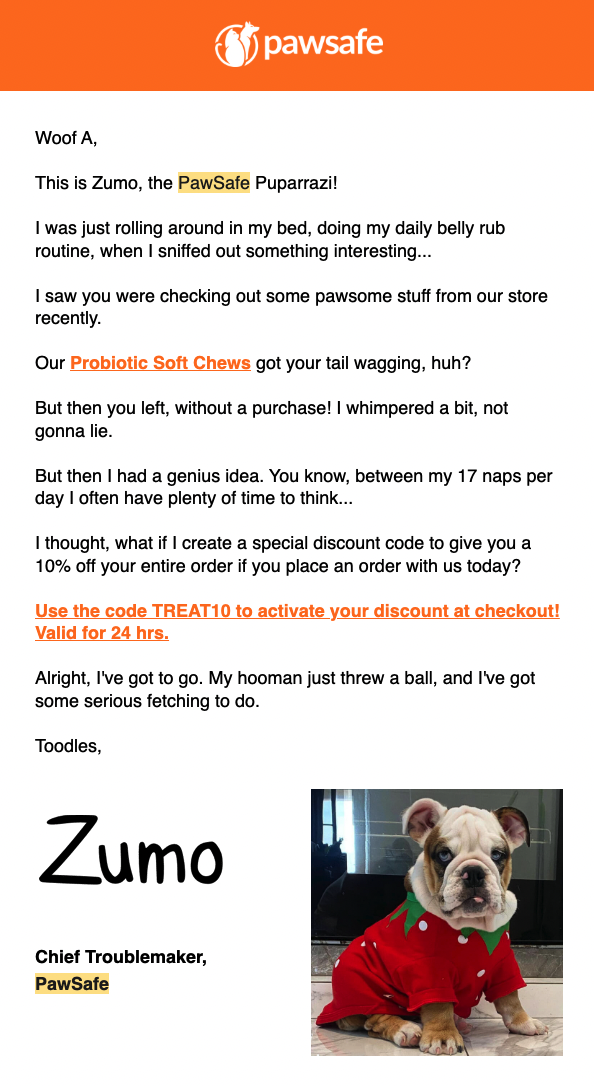
We don’t even have to explain why this works, do we?
H3: Step 3: Pick Images
The right visuals can elevate your newsletter and transform it into a visually appealing piece of content. Here’s a checklist of 13 questions that will help you pick the right images for your email newsletter:
Are the images….
Also, ensure the following for scannability, brand recall, and accessibility:
Step 4: Decide the Newsletter Design Layout
Once your visuals and copy are ready, the layout is what ties it all together. Here's what great Shopify newsletter designs look like:
- Use visual hierarchy: Make the most essential content and CTA stand out.
- Highlight key sections: Use bold headers, pull quotes, or color blocks to guide attention.
- Keep it skimmable: Include short paragraphs, clear sections, and helpful subheadings.
- Be consistent with fonts: Otherwise, it will look cluttered.
- Leave white space: Cramming kills readability.
- Make links obvious: If it’s clickable, make it look that way.
- Keep image layouts clean: Arrange images in a grid or card format to maintain structure.
- Test responsiveness: Your newsletter design should hold up across all devices.
Use Brevo’s drag-and-drop editor to create a layout in under 10 minutes that adheres to these design best practices.
Step 5: Send a Test Email
Before your newsletter goes out into the world, send a test email to yourself and the team.
The test email helps you catch visual bugs, typos, and formatting errors before your subscribers do.
Step 6: (Smartly) Schedule the Newsletter
Done editing? Now, let the data decide the timing. Morne de Heer suggests using intelligent send-time optimization to personalize the delivery time for each subscriber so that you reach them at a time when their inclination to shop is the highest.
Use Smart Send to land in inboxes when your audience is most likely to click
5 Must-Have Elements of a High-Performing Newsletter
Here are the building blocks that will make your email stand out in a crowded inbox and drive high open rates for your Shopify store:
Compelling subject line
You have to make the subject line (especially the preview text) worth the click. Misleading hooks (like a dramatic opener that leads to a dull discount) break trust fast. Remember: the subject line is a part of your newsletter. Experiment with one of these 150 email subject lines in your next newsletter and keep it short and sweet.
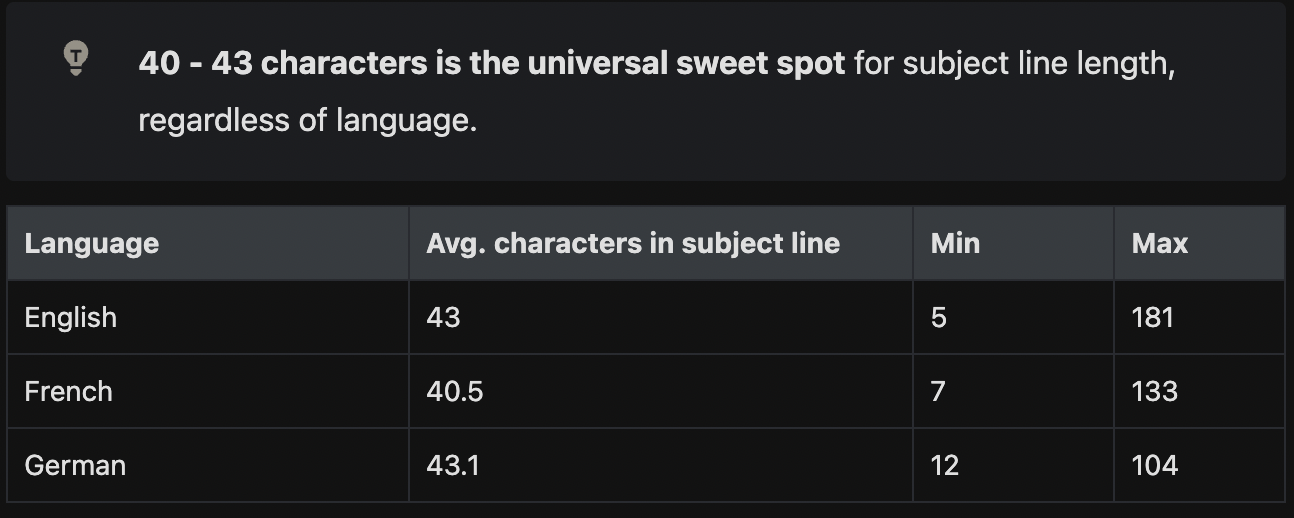
Powerful Header
Your subject line gets the click. Your header keeps them reading. Evoke emotions, trigger curiosity or excitement, and make the reader want to scroll further.
Check out this email from Immi, a popular ramen brand:
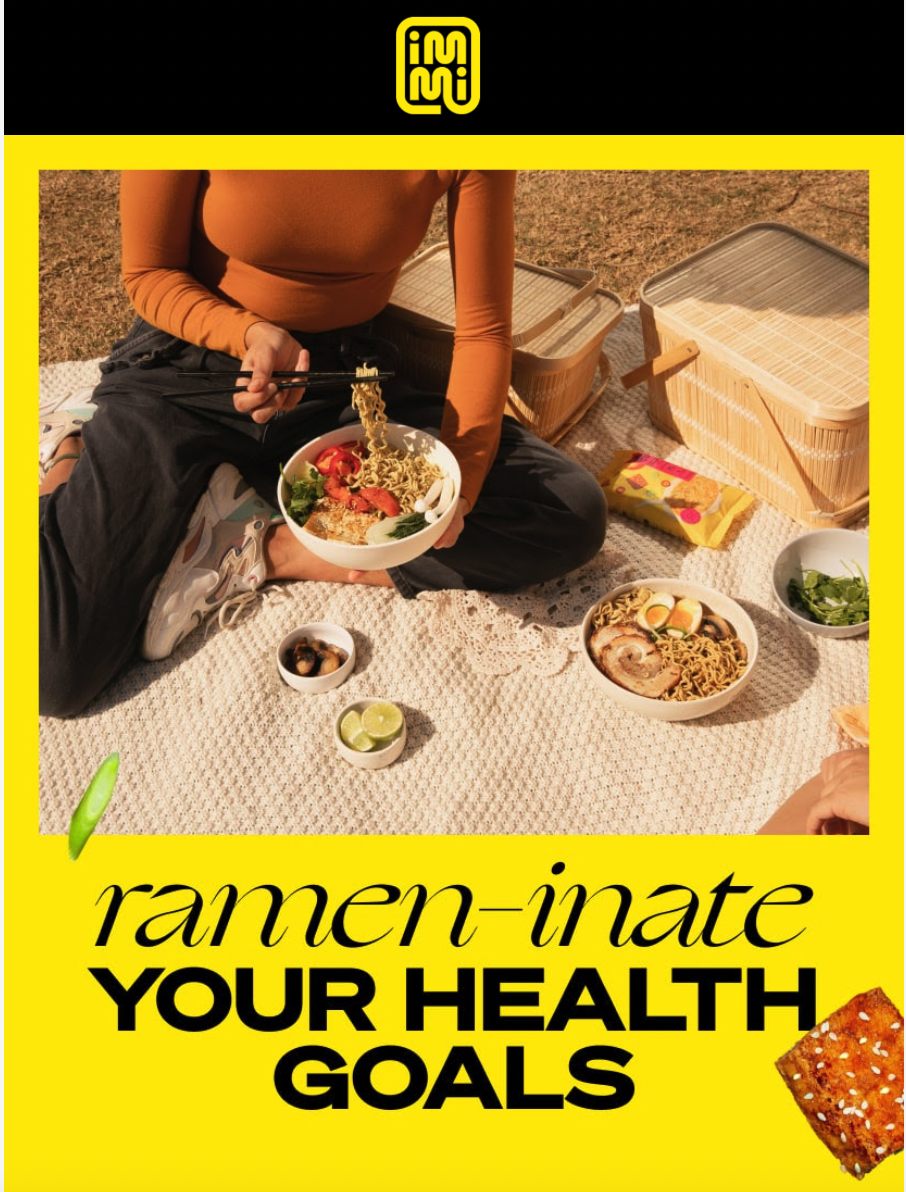
Why it works: The headline conveys a pun and its USP (healthy noodles) before the email copy dives into the product’s nutritional benefits.
Clear Value Proposition
Answer this question upfront: Why should the reader care?
Whether it’s a sneak peek, a helpful tip, or a must-know stat, highlight the value upfront so they have a reason to keep scrolling.
Mobile-Responsive Layout
81% of emails are now opened on mobile devices instead of desktops. That’s why your newsletter needs to be mobile-first. It should:
- Load fast
- Use legible fonts
- Have tappable links and buttons
- Avoid text walls
- Keep your design intact
A Clear CTA
Imagine walking into a store and being bombarded with “Buy this! And this!” every few seconds.
That’s precisely how chaotic a newsletter feels when every CTA competes for attention. Instead, pick one explicit action you want the reader to take and design a compelling CTA that matches it.
Types of Shopify Newsletters You Must Send
Some Shopify brands go all in on “story-led” newsletters. These focus on content and storytelling over sales, and are great for building relationships and trust.
Brand Updates
Give your subscribers insider access to your journey, and share regular brand updates. This is how Taza, an organic chocolate brand, announced its website revamp:
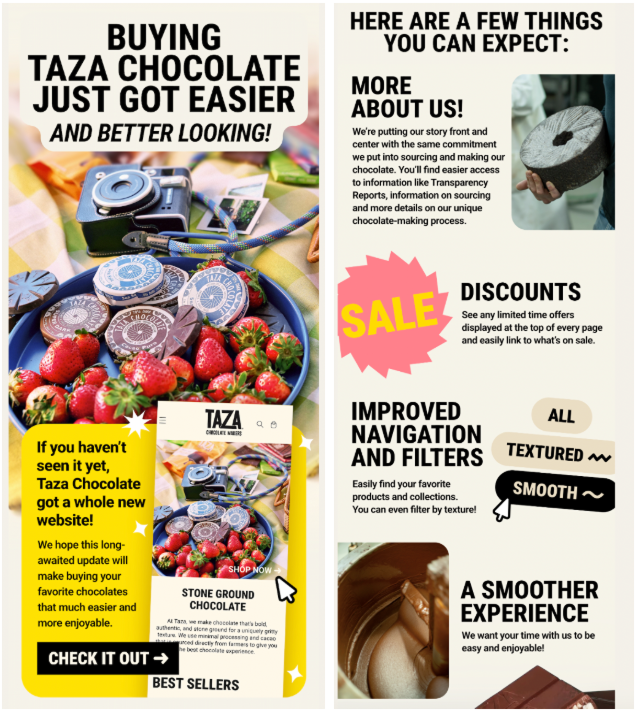
Why it works: The brand turned a plain CX update into a vibrant, story-forward design to highlight what’s new (like filters and smoother navigation.
Industry Trends
Sharing trends builds trust and positions your brand as informed and relevant. Here’s an example by Wonsulting, a resume optimization service.
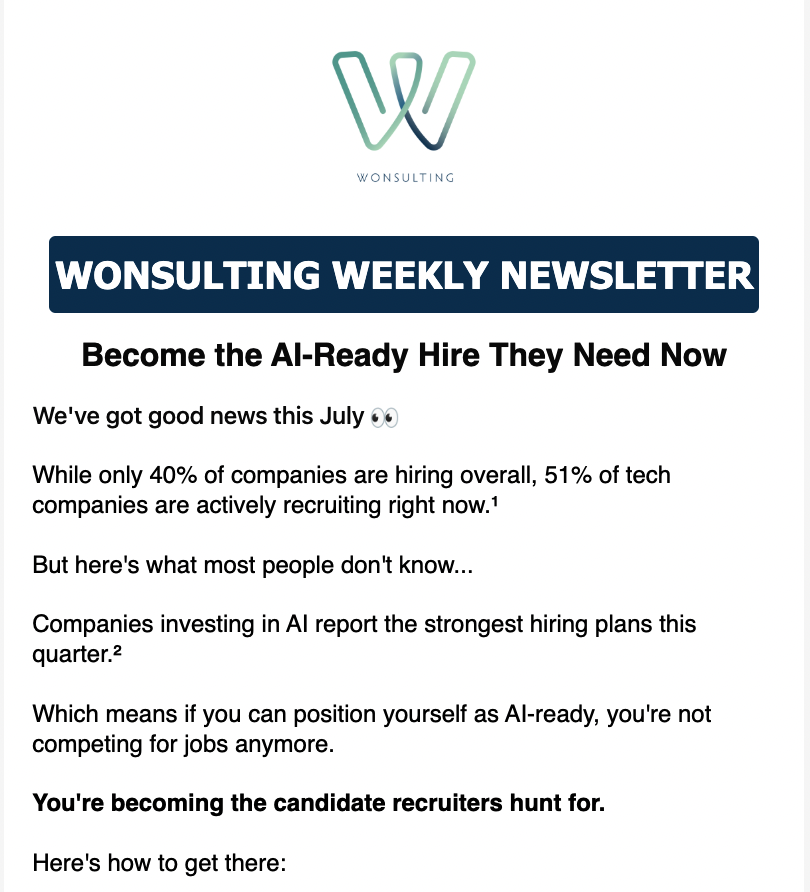
Why it works: The email newsletter highlights relevant shifts in hiring patterns with statistics that directly impact job seekers, i.e., their core audience.
Event Announcements
Email newsletters are an excellent opportunity to promote events (either online or offline) that you are organizing or sponsoring. Here’s how Young Goose, a skincare brand, does it:
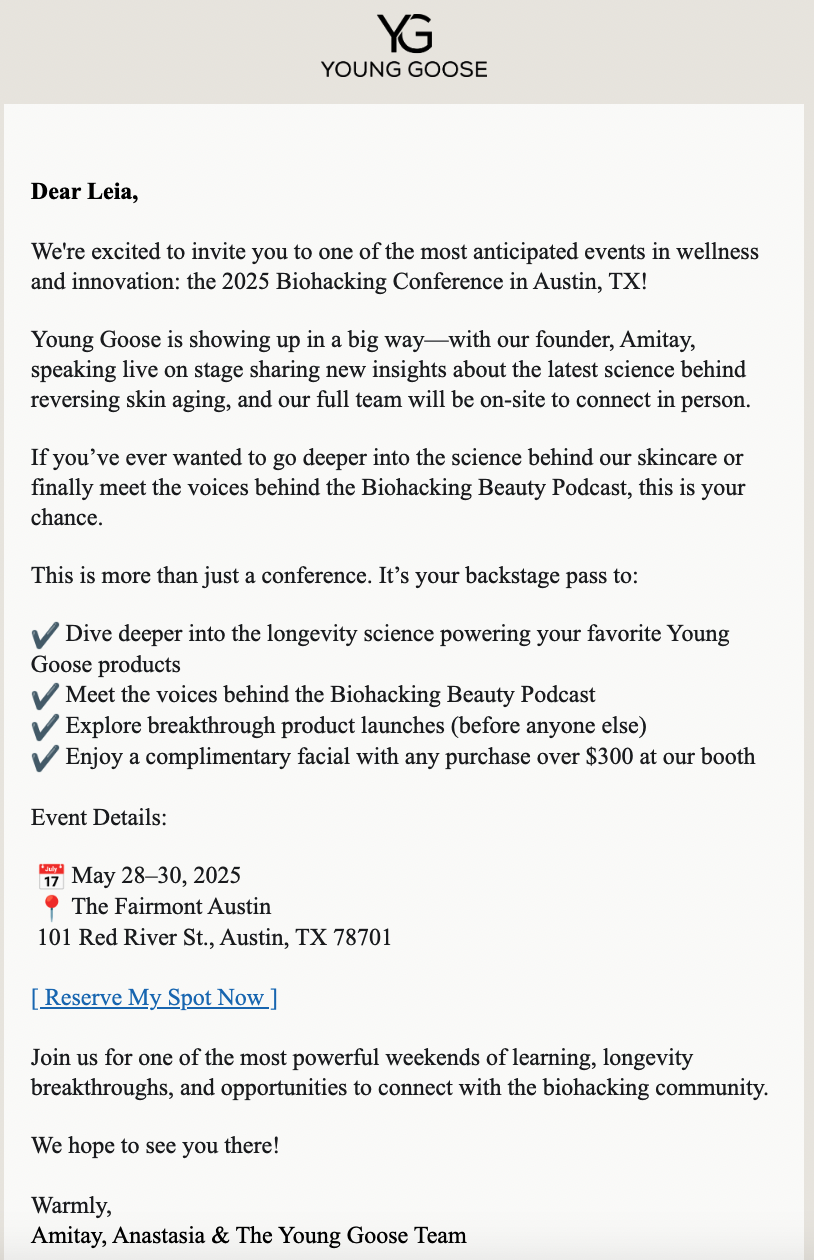
Why it works: The email maintains a warm and personal tone while highlighting key reasons to attend using scannable bullet points. It features a clear CTA link.
Now let’s move on to some “sales-led” newsletters, which aim to convert a subscriber into a buyer, such as:
Product Roundups
Babylist, a baby gift registry brand, runs a series called “Registry Inspiration” through which customers are given a round-up of the best products of a specific category.
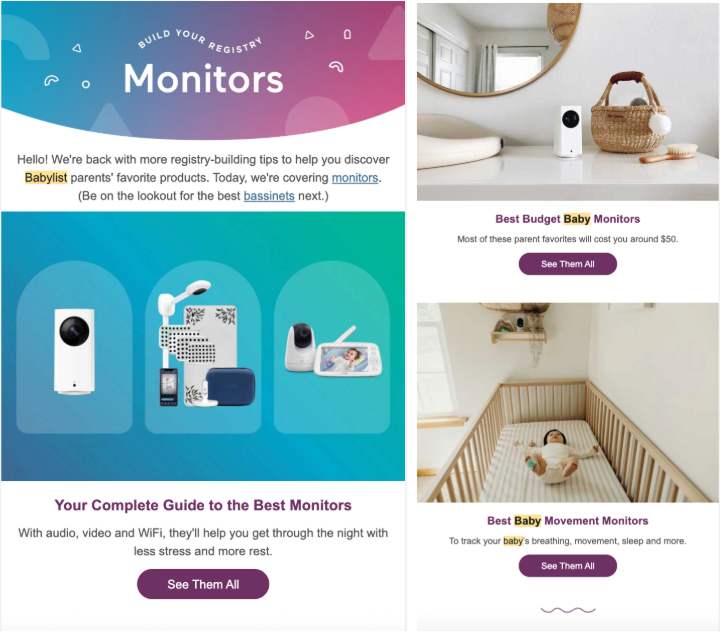
Why it works: Parents know to expect a helpful, well-designed product roundup list in their inbox. It combines shopping inspiration with educational content.
New Product Announcements
The best product announcements come with a clear “why,” and Young Goose nails it.
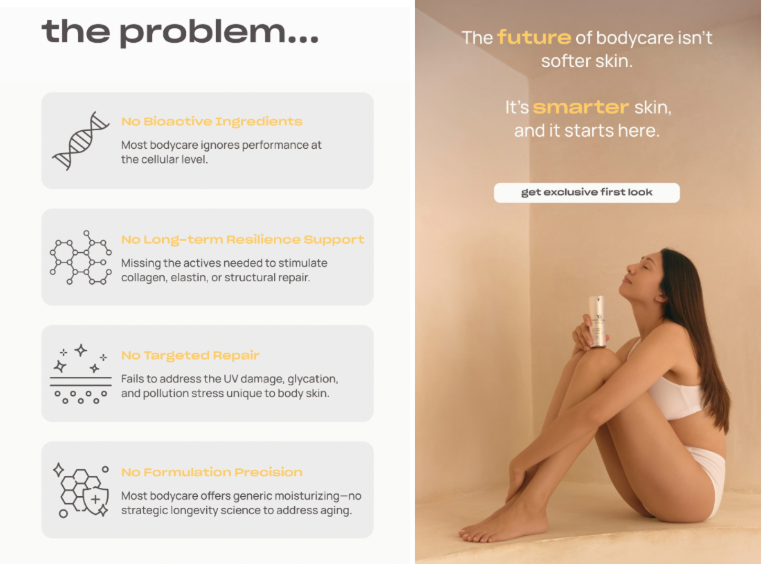
Why this works: This e-commerce newsletter goes beyond “new drop!” to actually educate the reader with expert-backed benefits. The CTA? Makes the reader feel like they are part of the inner circle.
Best Practices for Shopify Brands
Use these expert-backed tips to create newsletters that your audience actually looks forward to.
Start Simple
Many brands don’t know how to create a Shopify newsletter because they assume it requires too many tools.
As Layla Sawyer from Yabby puts it: “You don’t need fancy software or designs to create a newsletter that resonates with your audience… A simple, well-timed email, without all the bells and whistles but with the right content, can be incredibly effective.”
That costly Klaviyo subscription? You don’t need it.
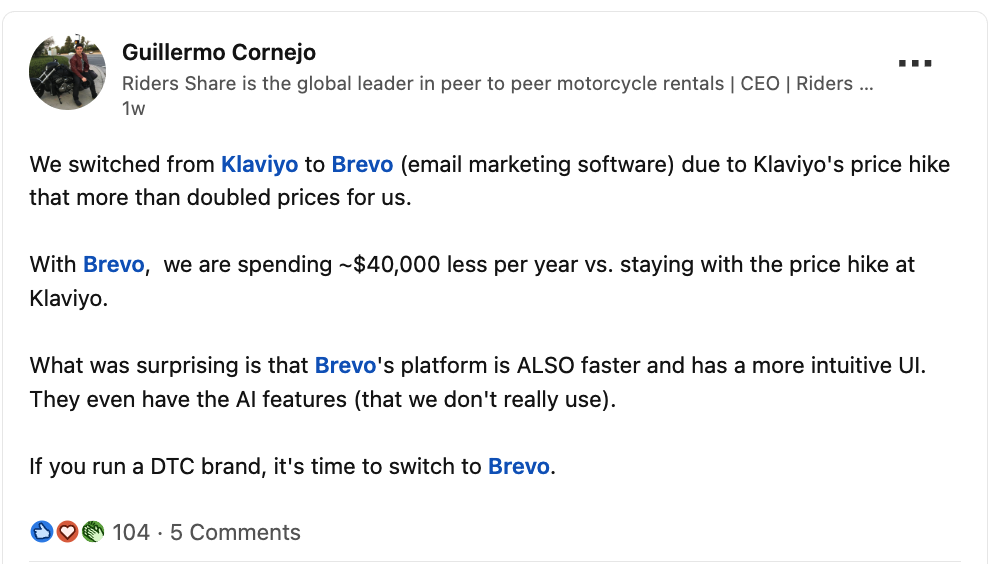
Repurpose and Promote
You have already put in the work. Don’t let that email newsletter live and die in an inbox.
Repurpose the copy into a WhatsApp newsletter or message. Link it in a short SMS or other email flows with a summary. Promote it through a push notification.
That’s smart omnichannel marketing: not copy-pasting content, not creating from scratch each time.
Measure and Tweak
Use the following KPIs to track the performance of your email newsletters:
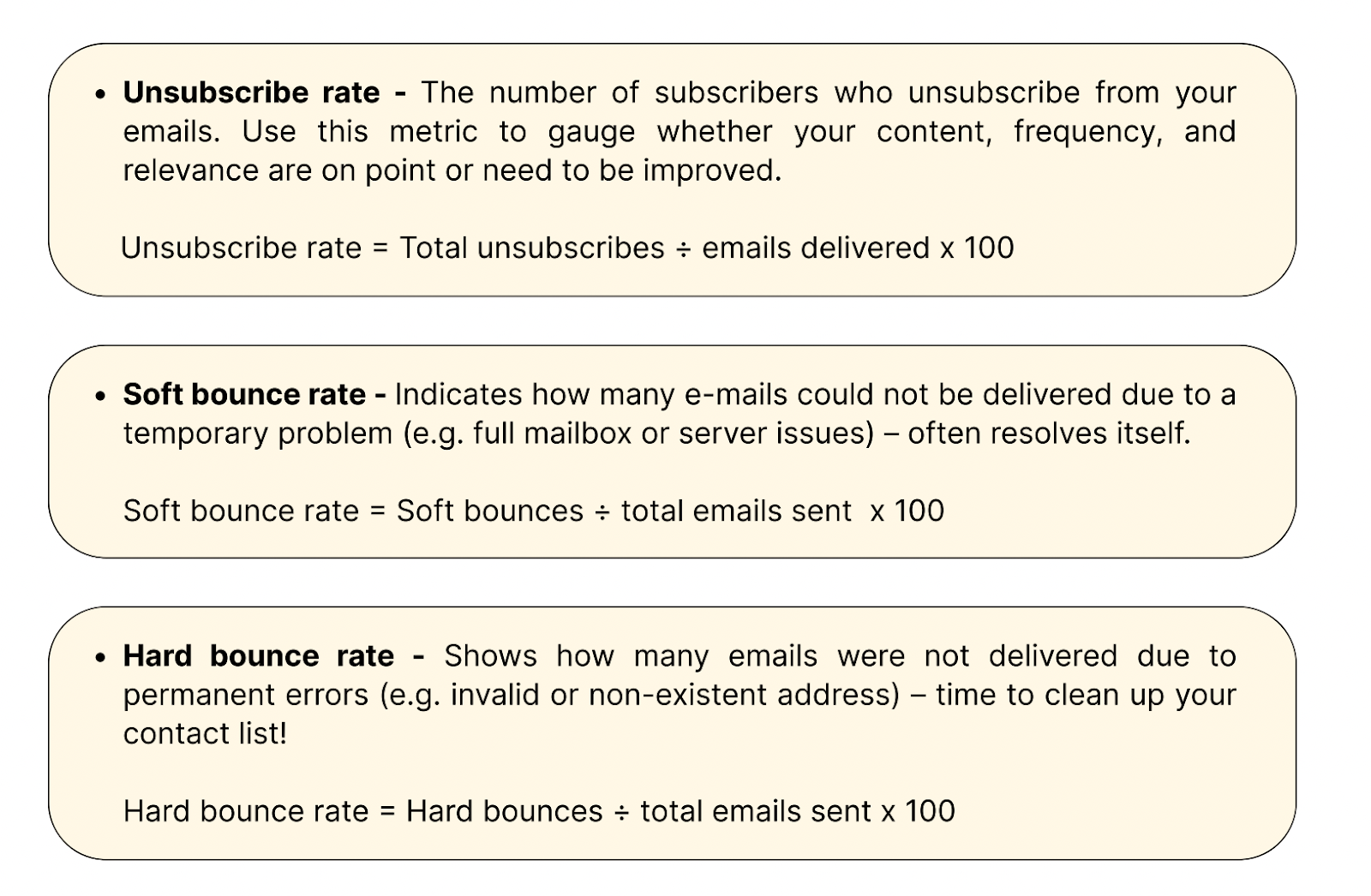
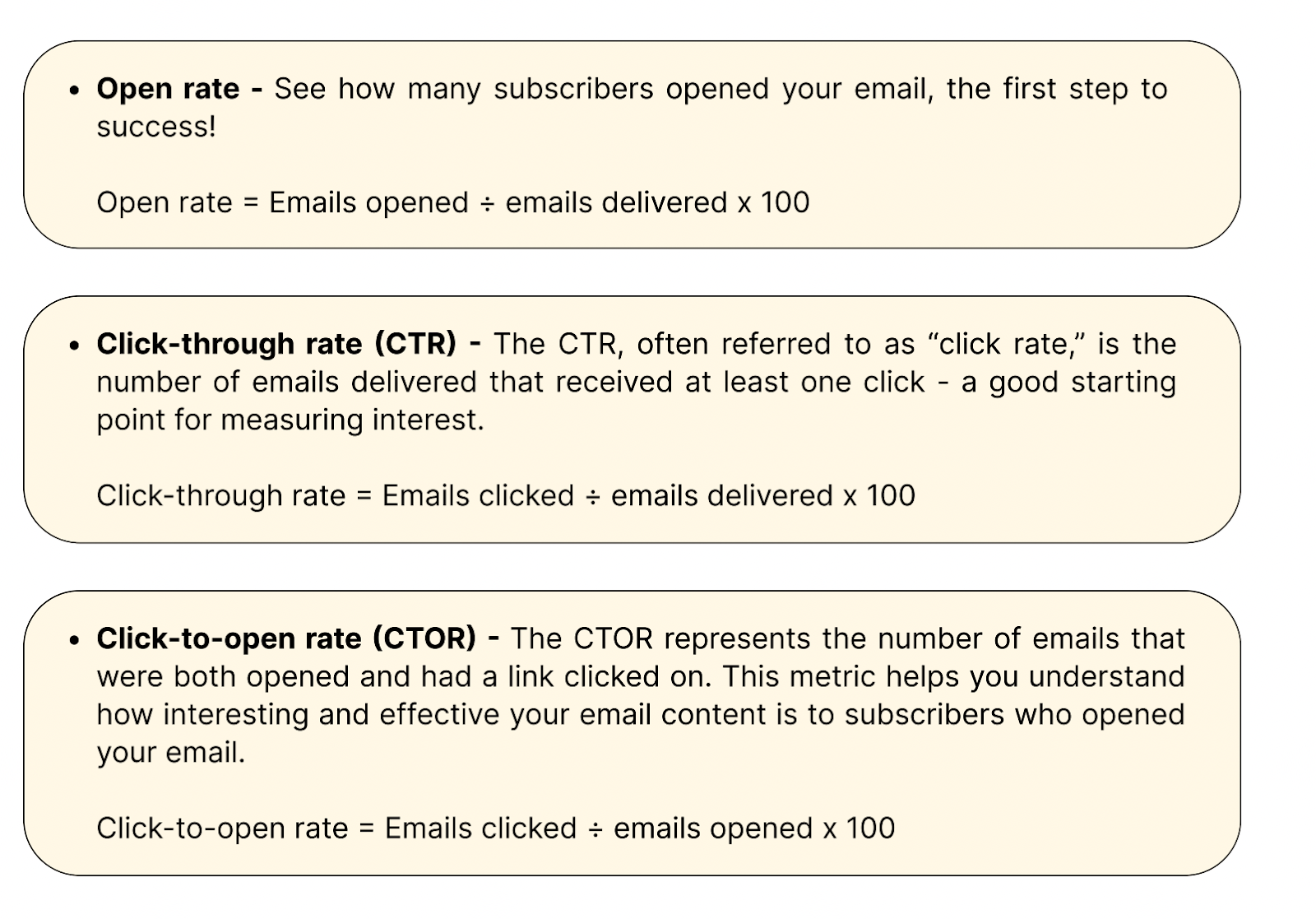
Then, turn to the copy. Layla Sawyer and her team at Yabby swapped a wordy hero banner for sharper copy and a clear CTA. The result? A 28% bump in button clicks.
Tiny tweak. Big impact.
Adhere to Local Email Communication Laws
Your marketing emails must comply with the rules of the regions you're targeting. Each country has its own regulations around opt-ins, unsubscribe buttons, and data privacy. A breach or violation can lead to fines, deliverability issues, and a damaged brand reputation.
And let’s be honest: “Data leak” is the last thing you want to report in your next newsletter.
3 Email Newsletter Mistakes To Avoid
How do you ensure you are not unintentionally harming your engagement rates? Use this list of common mistakes brands commit when launching their email newsletters:
Selling in Every Email
Ashlee Dickson, Sales and Marketing Associate at Console Vault, a brand that sells center console safes for vehicles, suggests that:
Instead of writing emails with the thought, “How much revenue can we squeeze out of this?” we should change our mindset to, “How does this email make my customer more likely to buy again later?”
Console Vault follows this approach well: “Some people choose to store a gun in the center console, so every year in early June, we partner with Project Child Safe and other gun safety organizations to share tips and best practices on the topic via our email newsletter.”
Why?
Dickson explains: “Even though this email doesn't directly encourage sales, it's focused on nurturing the relationships with our customers.”
Sending Too Many Emails
“Sending too often, without a clear plan, just burns people out and drives them away,” says Shopify expert Mac King. More emails don’t always mean more sales. Spamming inboxes with generic messaging only erodes trust and interest.
Stick to a consistent, value-driven cadence that respects your subscribers’ attention.
Including Too Many CTAs
A clear CTA hierarchy, with one primary action and a few low-key secondary options, helps guide your reader through the email copy.
Morne de Heer’s Brand Nexus Studios optimized a Shopify jewelry brand’s newsletters, which had buried their primary CTAs. The result? A sluggish click-through rate.
The fix, as he shares:
“We featured just 1-3 hero products per newsletter, and we added a single CTA button that stood out. The CTR increased by 35%, resulting in a boost in traffic and sales.
Are Email Newsletters Worth It in 2025?
Yes, but only if they are well-presented, timely, and valuable. Tools like PushOwl help you go beyond basic blasts. Inbox fatigue is real. With newsletter software like Brevo, you can go beyond just sending so that the newsletter truly connects with the subscribers.
Already using PushOwl? Integrate these templates into your existing SMS, WhatsApp, and push campaigns to boost your engagement rate.



